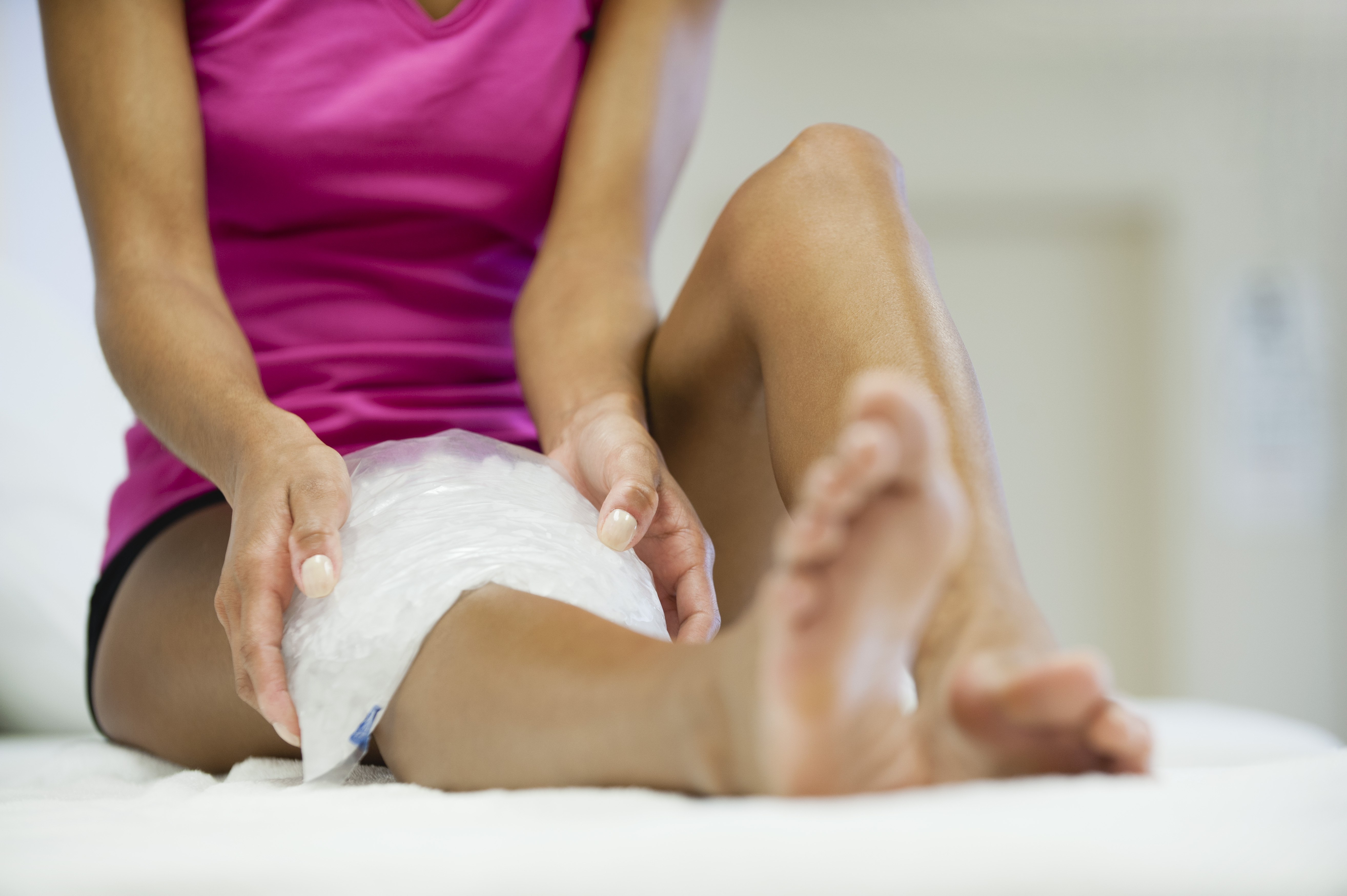
Having home remedies for heat rash at your fingertips is increasingly useful as the weather warms up.
While sunburn remedies rely on moisturising the skin, heat rash (otherwise known as prickly heat) needs anti-inflammatory products because it's an allergic reaction to hot temperatures. Symptoms include small red bumps, an itchy, prickly sensation, as well as redness and mild swelling. While not dangerous, heat rash can be uncomfortable, and may have you struggling to sleep in the heat and looking for ways to cool down fast.
Heat rash can develop anywhere on the body, but is more often found on the neck, chest, and back, and affects adults and children alike. Dr Hana Patel, GP specialist in skin health and women's health, and a GP Expert Witness, told us, "Babies often get heat rash because they cannot control their temperature as well as adults and children can. The main thing to do is keep your skin cool so you do not sweat and irritate the rash." With this in mind, we spoke to Dr Patel and other medical experts to put together this list of the best home remedies for heat rash.
9 home remedies for heat rash
1. Apply an ice compress or cold damp cloth
This is one of the most basic home remedies for heat rash. Lloyds Pharmacy pharmacist Anshu Kaura told us, "You can naturally calm the prickly heat rash by applying a cold flannel to the rash for no more than 20 minutes and patting the rash, instead of scratching it."
Scratching or rubbing heat rash will only work to further irritate the rash and if the skin breaks, the rash could become infected and require further medical treatment. For similar reasons, pharmacist Anshu says to "avoid using fragranced products" on the prickly heat rash, as it may aggravate the condition.

Bathing in cool water can also help to soothe the rash, and may also unclog the pores to help heal heat rash.
2. Apply aloe Vera gel
Aloe vera gel is a well-known cure for sunburn, but it also works for prickly heat. Either in a paste from a pharmacy or directly from the plant, Aloe vera will cool the rash as it contains anti-inflammatory properties and does not clog the pores on your already-irritated skin.
A study in the Journal of Traditional and Complementary Medicine assessed the medical benefits of aloe vera and found it to be both anti-inflammatory and wound healing, because it suppresses inflammatory responses. Plus, it had anti-inflammatory effects in UVB-induced sunburn too, making it a great sunburn remedy as well.
3. Try using Calamine Lotion
Calamine lotion is a medication used to soothe itching, and as well as heat rash it can be used to treat insect bites, chicken pox, minor burns and reactions to poisonous plants, such as poison ivy.
A study in the Journal of Skin and Sexually Transmitted Diseases found that when the water from calamine lotion evaporates from the skin, it causes a cooling sensation, which is how this medication works to soothe heat rash. The researchers added that calamine lotion is considered safe in pregnancy and lactation as well as for treating infants, making this a great option for the whole family - from babies to parents.
Dab some calamine lotion onto your rash using a cotton pad and reapply as needed, taking care to avoid getting any of the lotions in the mouth or eyes.
4. Apply sandalwood
Several studies have highlighted the anti-inflammatory properties of sandalwood, making it a great home remedy for heat rash. A 2014 study on rats in the Journal of Phytotherapy Research found that sandalwood oil suppressed the production of numerous pro-inflammatory proteins in the body, while a 2018 study in the Frontiers in Pharmacology journal found that 75% of pediatric eczema patients treated with sandalwood oil achieved a reduction in their 'Eczema Area and Severity Index' score.
To try using sandalwood at home on heat rash, mix two parts sandalwood powder with one part water to form a paste and apply this to the area of rash - but make sure to test the mixture on an unaffected area of skin first, to check it doesn't cause an allergic reaction. Sandalwood powder is a natural remedy that comes from the East Indian sandalwood tree, and is safe to use on all age groups.
5. Cool the body
Overheating is a sure-fire way to make heat rash worse, so if you feel one coming on you should find a way to cool down quickly.
One of the quickest ways to do this is to take an ice cube from the freezer and press it to areas of your body where the veins are closest to the surface. This includes your temples, wrists and chest. Once the cold hits these areas, it hits your bloodstream and you should almost immediately begin to feel cooler.
If using an ice pack, make sure to wrap the ice pack in something, such as a towel, to protect the skin (never apply an unwrapped ice pack directly to the skin). Other ways to cool down fast include:
- Staying hydrated
- Sitting next to a fan
- Keeping your house cool
- Limiting physical activity

6. Wear loose-fitting clothing
Wearing loose-fitting clothing is one of the best remedies for heat rash as it will help to keep the rash - and your whole body - cool while the area goes through a natural healing process.
Stay away from materials which trap in heat to the body - like silk, polyester and satin. Instead, go for ventilation via natural sweat-wicking materials such as cotton.
In fact, a study published in the Nature and Science of Sleep Journal found that cotton increased airflow to the body - and even helped people sleep better in warmer temperatures. While those who slept in wool sleepwear fell asleep faster at a temperature of 17°C, those wearing cotton were able to get to sleep much quicker at a temperature of 22°C. Opt for cotton - Egyptian or normal - bedsheets where possible as well, so that you don't further irritate the rash when you go to bed at night.
7. Bathe in colloidal oats
A study in the Journal of Drugs in Dermatology found that an oat bath is an effective way to reduce the itching and inflammation that comes with heat rash, making it a great home remedy for prickly heat and other skin conditions like sunburn.
Meanwhile, a study in the Journal of Burn Care & Rehabilitation found that burn patients who used a product with colloidal oatmeal reported significantly less itch and requested significantly less antihistamine than those using an oil containing liquid paraffin as a treatment. Oatmeal is also effective at cleansing the skin, so it may help to reduce the clogged pores that are contributing to the heat rash too.
The best way to run yourself an oat bath is to put about 130 - 260g of oats into lukewarm bath water and soak in them for about 20 minutes. Make sure that the water isn't too hot, as this could further irritate the skin.
Alternatively, make a paste with half oats and half water and apply it to the rash and the area around it. Colloidal oatmeal can be bought from most natural food shops, or you can make it yourself by grinding oat grain - otherwise known as avena sativa - into a fine powder.
8. Keep your SPF topped up
If you're planning to spend more time in the sunshine, your heat rash needs to stay covered in suncream - but the right kind. SPF that's too heavy will block the pores of your skin and make your heat rash worse, so make sure you're opting for the best sun cream for your skin type.
You might want to try a sun cream that has been formulated especially for acne-prone skin, such as products from sunscreen brand Ultra Violette. Their Extreme Screen is SPF50+ to keep you protected from harmful UV rays, and it contains aloe vera to help soothe irritated skin. Plus, it's approved by Goodto's very own Money Editor, Sarah Handley.
9. Take an antihistamine
Over-the-counter antihistamines are sometimes used to treat heat rash. Most commonly used as a hay fever remedy, they can help to relieve the itching that heat rash causes.
However, they can also cause drowsiness, and if you're giving antihistamines to a child it's best to talk with your doctor or pharmacist about which types are best.
Pharmacist Anshu Kaura told us, "Some people find antihistamines can help with prickly heat; however some options are not always suitable for everyone. Speak to your pharmacist about which antihistamine tablets might be right for you."
Does Sudocrem help heat rash?
Treating heat rash is often thought of as one of the uses of Sudocrem, because this bathroom cabinet essential contains lanolin, which was shown to prevent the body from losing water through burns and rashes in a study in the Journal of Clinical Medicine & Research.
Abbas Kanani, pharmacist at Chemist Click, told us that while Sudocrem is not specifically formulated or marketed as a treatment for heat rash, it can help soothe and protect the skin in certain cases.
He said, "It contains the ingredient zinc oxide which acts as a barrier and can provide a protective layer over the skin. It may help prevent further irritation and relief for some symptoms such as itching and discomfort." He adds, "Sudocrem may also have a mild cooling effect when applied to the affected area," though he warns that Sudocrems effectiveness in treating heat rash may vary.
What can be mistaken for heat rash?
The small red bumps that are caused by heat rash can often be mistaken for other conditions - such as insect bites, eczema and hives - and vice versa. Abbas Kannani offers some advice for spotting the difference between heat rash and other skin problems.
- Mosquito bites, flea bites or bites from other insects can cause itchy, red bumps that may resemble heat rash. These tend to be localized to specific areas and are often accompanied by a visible bite mark.
- Skin conditions such as eczema and contact dermatitis are also mistaken for heat rash. Eczema tends to occur in areas not typically prone to heat rash, such as the creases of the elbows and behind the knees and contact dermatitis often occurs in specific areas exposed to the irritant or allergen.
- Hives can share some similarities with heat rash, but they are typically larger and more variable in shape and size.
- Allergic reactions to certain substances, such as detergents, fabrics, or skincare products, can cause redness, itching, and small bumps on the skin, similar to that of heat rash, but are often in specific areas where the allergen came into contact with the skin.
How long does it take for heat rash to disappear?
The length of time heat rash lasts can vary depending on its severity, and it can take from a few hours to a few days to disappear completely.
Abbas Kanani advises, "Severe cases can take longer to heal and may require medical attention, and it may take a week or more for the rash to fully subside. If the rash worsens or becomes infected, it's important to contact your doctor for appropriate treatment."
Here on Goodto, we have plenty more advice on the best natural remedies, from expert-approved travel sickness remedies to flu remedies and remedies for a sore throat too.







